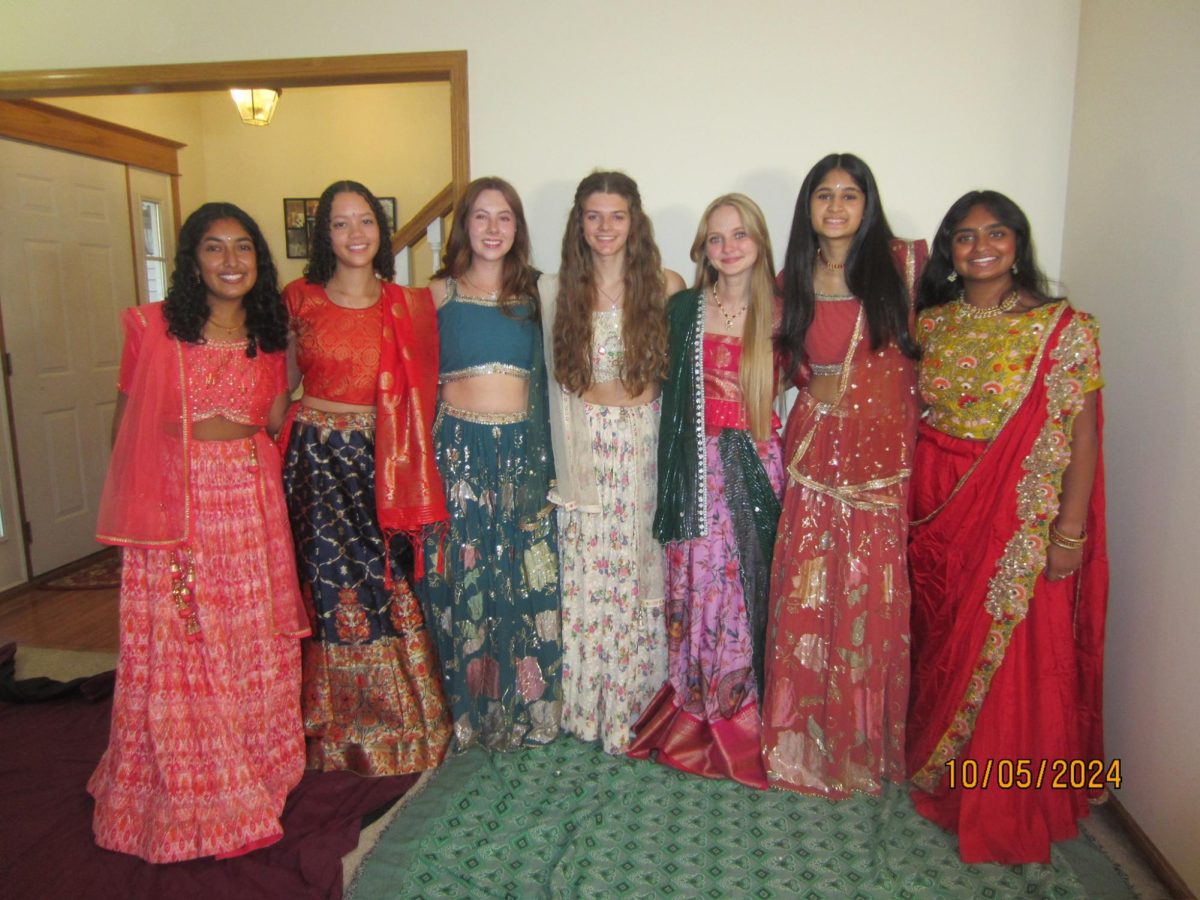On Oct. 5 and 12, the annual Hindu celebration Garba was hosted at the Bettendorf Middle School. Garba is performed during Navaratri–meaning nine nights and is the largest dance festival celebrated in the world.
Garba is performed by dancing back and forth in circles, symbolizing the cyclical nature of time. Each fall, men, women and children gather to dance during the late hours of each day throughout Navaratri. People often eat dinner, socialize and pray before engaging in dancing.
Despite the Quad Cities having a relatively small South Asian population, the community has a noteworthy presence in cultural festivities. “Garba is one of the only times each year where I see the entire Indian community come together. Oftentimes, I can’t even recognize the hundreds of people who come to celebrate,” stated Indian-American Priya Suresh.
Events like Garba help unite the vast majority of South Asians in the QC area, while also attracting others to this rich tradition.
Those unfamiliar with Hindu tradition and Garba have enjoyed taking part in other cultures. Senior Kelly Wilson, who has regularly attended Garba for the past two years, shared her enthusiasm. “Garba was an amazing experience for me. I love participating and learning more about other cultures. Everyone was so welcoming and they even helped me with the dances. I would encourage everyone to participate in cultures outside of their own. I hope to go again next year,” Wilson emphasized.
Wilson is one of many Americans originally unfamiliar with other cultures, but she had the chance to learn about one of the world’s most prominent religions. As the U.S. continues to become increasingly religiously and culturally diverse, celebrations like Navaratri are opportunities to embrace the nation’s multicultural demographic.
However, Indian culture and traditions are reduced to an “aesthetic” to be worn. Celebrities and influencers wear bindis, a sticker or gem worn between the eyebrows. Whether it is Vanessa Hudgens at Coachella or Selena Gomez at the MTV awards, wearing cultural elements without recognizing the tradition behind it is a norm.
Celebrity Kim Kardashian even wore maang tikka, an Indian headpiece, to a Sunday service at a church. Beyond pretty pearls or intricate gemwork, this headpiece represents one of 16 Solah Shringar, meaning wedding jewelry.
“Indian jewelry and clothes are often stereotyped as a bohemian aesthetic, leading people to frequently appropriate the culture without a deeper understanding,” explained Suresh.
Events like Garba offer an opportunity for non-Indian people to have a glimpse into a vibrant and thriving culture, without falling prey to cultural appropriation. For South Asians across the globe, seeing others participate in one of their biggest events creates a sense of appreciation and pride for their culture.









